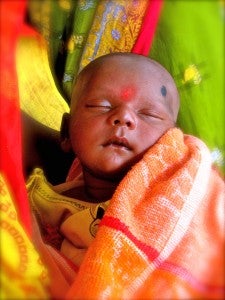This post is part of our “Continuum of Care” blog series hosted by the Maternal Health Task Force.
 Over the past year, the Maternal Health Task Force along with colleagues at the Harvard School of Public Health, the World Health Organization, and ICS Integrare have developed and managed the Adding Content to Contact (ACC) project. The goal of this project is to systematically assess the obstacles to and enabling factors for adopting and implementing cost-effective interventions for antenatal and postnatal care along the care continuum. As part of the project, we have conducted in-depth assessments of eight models, four regional and four national, that are delivering antenatal (ANC) and postnatal care (PNC) in a variety of settings around the world.
Over the past year, the Maternal Health Task Force along with colleagues at the Harvard School of Public Health, the World Health Organization, and ICS Integrare have developed and managed the Adding Content to Contact (ACC) project. The goal of this project is to systematically assess the obstacles to and enabling factors for adopting and implementing cost-effective interventions for antenatal and postnatal care along the care continuum. As part of the project, we have conducted in-depth assessments of eight models, four regional and four national, that are delivering antenatal (ANC) and postnatal care (PNC) in a variety of settings around the world.
Through the “Continuum of Care” series, we are thrilled to contribute to the dialogue on making high-quality ANC and PNC available, accessible, and acceptable. Along with numerous guest posts, we hope to move this dialogue forward and explore how we can support women and families, providers and health systems to adopt and scale up cost-effective ANC and PNC programs in resource-poor settings to benefit women and children.
Regional and Local Programs Profiled by ACC
Developing Families Center—Washington, D.C.
The DFC was started in 2000 in Northeast D.C. to provide support programs and primary health care to low-income populations in one of the poorest areas of Washington. In addition to housing the only free-standing birthing center in the District, the organizations within the DFC provide midwife-led antenatal care, nurse-led primary health care, support groups for teen parents, and early childhood development programs. Patients who receive care through the DFC are more satisfied and experience lower rates of Caesarean section, low birthweight, and preterm birth.
Group care models
Research has shown that women often do not attend ANC because they see pregnancy and childbirth as healthy life events, lack the financial resources to access ANC, or are unsatisfied with the care and resources provided. This case study highlights group care models that are used during and after pregnancy to build camaraderie between women and encourage them to attend ANC. The various models of group care include Participatory Women’s Groups, CenteringPregnancy, and other less formal group care models. The case study showcases the innovative aspects of these approaches and how they can be implemented widely to improve maternal and newborn health. Anecdotal evidence of these approaches has been promising; however, more rigorous research is needed to closely examine the health outcomes, acceptability and cost-effectiveness of group care models.
Jacaranda Health—Nairobi, Kenya
Jacaranda Health opened its first clinic in 2011. A social venture, it combines business and clinical innovations to provide women living in Nairobi’s peri-urban areas with high-quality, friendly and affordable maternity care through a network of self-sustaining and scalable clinics. With two brick-and-mortar clinics, the organization provides clients with high-quality individualized ANC delivered by nurse-midwives. Labor and delivery care is also available at the clinic, with postnatal care being provided both at the clinic and across the community. Jacaranda has developed its own electronic record-keeping service, an innovative postpartum family planning campaign, and its own mobile pre-payment service that helps families save for delivery costs. Early results, particularly related to patient satisfaction, have been promising, but more information on scalability is needed.
The Manoshi Project—urban Bangladesh
The Manoshi project was implemented in 2007 to bring skilled care into the informal settlements of six major cities in Bangladesh, with a particular focus on women and children. Manoshi’s Community Health Workers (CHWs) provide high-quality ANC, delivery care, and PNC to all pregnant women within the community, which includes appropriate family planning methods; connecting women with pre-selected referral facilities when necessary; arranging immunization and other care for under-five children; and creating women’s groups to drive community empowerment. Under Manoshi, ANC and PNC coverage have increased while unattended home births have decreased. While overall results are positive, increased support for Manoshi’s CHWS as well as improved connection with the public health system will be vital for the program’s success moving forward.
Follow the “Continuum of Care” series every Tuesday and Thursday through September 11th to learn more about these and other innovative models of ANC and PNC care.
